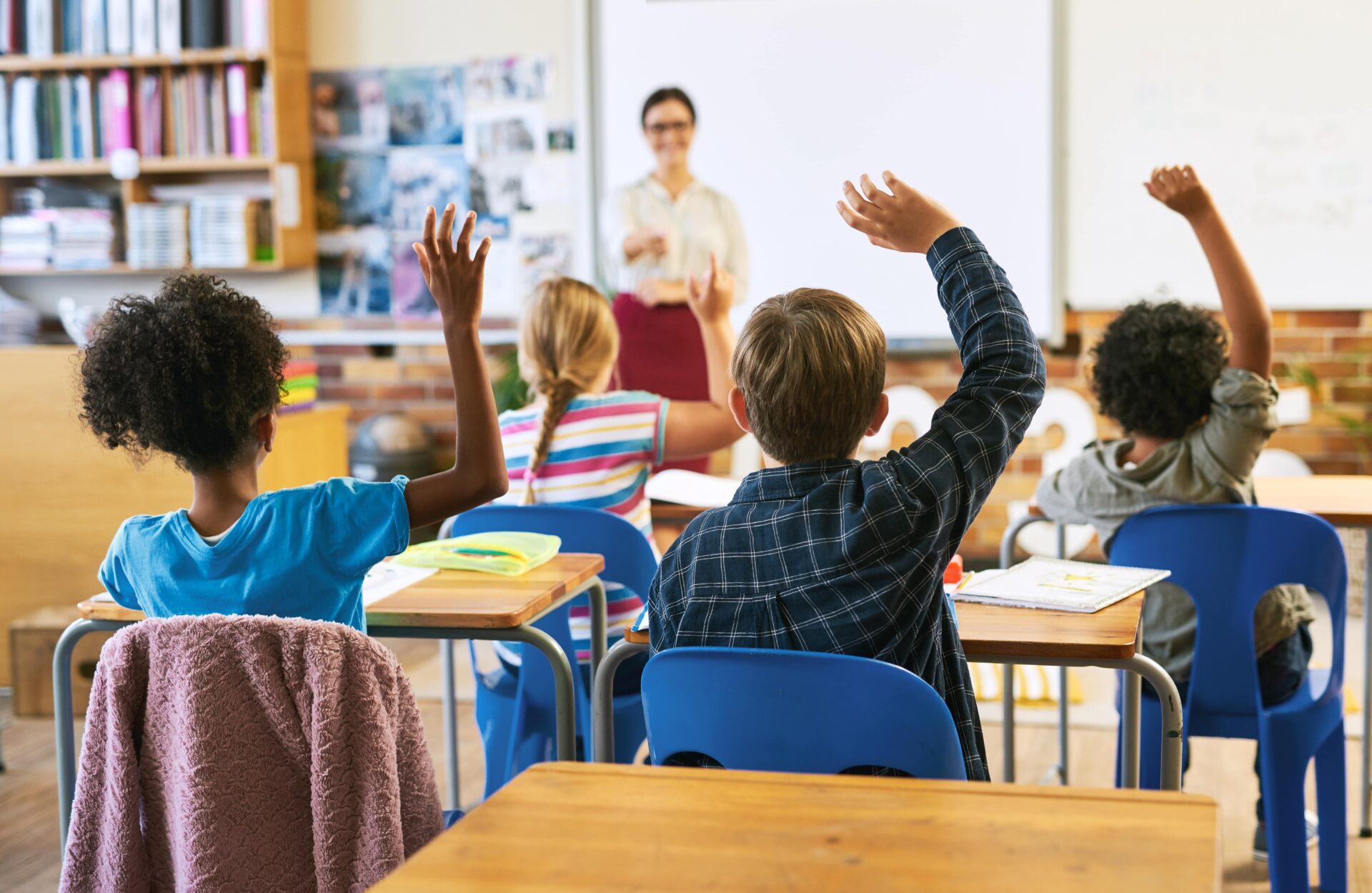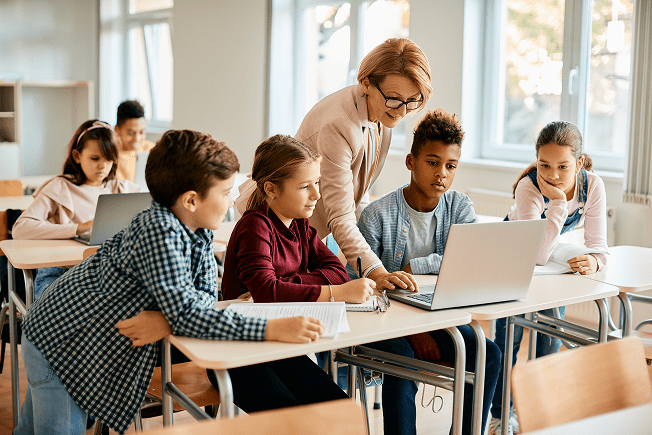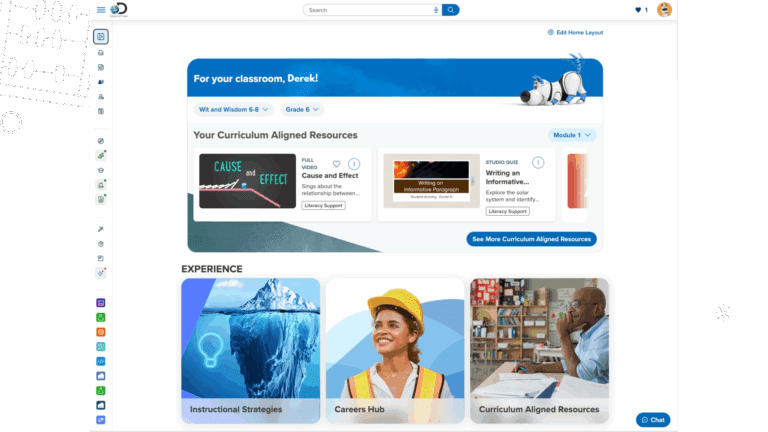Key takeaways
-
Effective teacher goals should be clear, purposeful, and directly linked to student learning.
-
The strongest teacher goals for the school year focus on growth—not perfection—and help teachers build habits that improve over time.
-
Administrators must provide clarity, coaching, and consistent feedback to help teachers turn meaningful teacher goals examples into lasting, schoolwide improvement.

Early in my career as an assistant principal, I learned a valuable lesson: meaningful teacher goals come from honest conversations, reflection, and a commitment to growing in areas that directly impact students—not from checklists, directives, or evaluation rubrics. Setting strong teacher goals for the school year helps teachers to improve instructional practice, strengthen relationships, and build classrooms where all students can succeed.
As you consider possible areas for growth this year, review the essential goals below. Each is designed to create stronger classrooms and better student outcomes.
Goal 1: Strengthen the Classroom Environment with Clear Routines
A well-structured classroom environment is the foundation of effective teaching. It supports learning, reduces behavior issues, and helps students feel safe and connected. That’s why many high-quality teacher goals for the school year focus on routines and expectations.
A clear classroom environment goal could be:
“I will implement and reinforce three consistent routines (entry, transitions, and closure) to improve student engagement and reduce lost instructional time.”
When teachers establish effective routines, the payoff is almost immediate. Students know what to expect, transitions become smoother, and the classroom operates more efficiently. From my observations, teachers who invest in goals related to the classroom environment almost always regain instructional minutes each day—time that directly benefits student learning.
Goal 2: Strengthen Relationships with Students and Families
Building positive relationships is essential to effective teaching. When students feel seen, valued, and supported, they are more willing to engage, take risks, and meet classroom expectations.
A meaningful relationship-based goal might be:
“I will build stronger connections with students by greeting them daily, checking in with at least three students each week, and incorporating one relationship-building activity into my classroom each month.”
Relationships with your students and their families matter. In my experience, beginning teachers often see some of their biggest improvements by strengthening relationships and communication.
Investing in relationship-based goals improves classroom culture, supports better communication, and increases student connection to school.
Goal 3: Use Data to Inform Daily Instruction
Using data is one of the most effective teacher goals because it helps teachers understand what students know and what they still need to learn. Data-driven instruction isn’t about spreadsheets—it’s about using quick, everyday checks to guide teaching. Exit tickets, short quizzes, student reflections, and other formative assessments all provide valuable information about what your students are learning.
A meaningful data-focused goal might be:
“I will review weekly exit tickets to plan targeted reteaching for students who have not yet mastered key concepts.”
When teachers consistently look at data, they can spot misunderstandings sooner, adjust lessons as needed, and provide better support. This leads to more responsive teaching, stronger student growth, and greater teacher confidence because decisions are based on evidence and research—not guesswork.
Goal 4: Increase the Use of High-Impact Instructional Strategies
High-impact strategies are those proven techniques that elevate student engagement and deepen understanding. These include checks for understanding, modeling, centers, cold-calling, and scaffolding.
An effective instructional strategy goal might look like this:
“I will implement at least two high-impact instructional strategies (such as think-pair-share and small group instruction ) in every lesson to increase my students’ participation.”
When teachers use these strategies intentionally and consistently, classrooms shift from teacher-centered to student-centered. When students’ engagement increases, more students participate, and learning improves.
These types of teacher goals are especially effective for teachers who want to boost classroom interaction without overwhelming themselves with new initiatives.
Goal 5: Improve Differentiation for Each Learner
From my perspective, differentiation is one of the most essential—and most challenging—components of effective teaching. Students come with a variety of strengths, needs, experiences, and learning styles. A differentiation goal ensures your students receive the right level of support while still being challenged throughout the school year.
A clearly worded goal about differentiation could be:
“I will plan at least two differentiated options for practice or assessment each week to support the varied learning needs of my students.”
Differentiation can include strategies such as using leveled texts, flexible grouping, choice boards, or modified activities. Regularly applying these strategies in the classroom promotes independence, confidence, and success among students.
These teacher goals for the school year are valuable because they help all students access learning at the level that’s right for them.
Goal 6: Improve Feedback to Drive Student Growth
Providing feedback is one of the most powerful ways to help students learn, especially when it’s delivered in a timely and specific way. Even veteran teachers often set goals to help them improve how they deliver feedback.
A feedback-focused goal could be:
“I will provide students with clear feedback within one week and create opportunities for them to revise or practice based on that feedback.”
Giving students meaningful feedback helps them to better understand expectations, improve their work, and grow more quickly.
These teacher goals for the school year directly support improved student learning.
Goal 7: Increase Student Ownership of Learning
Students learn best when they see themselves as active participants in their growth. That’s why goals related to student ownership are highly impactful.
A goal designed to increase student ownership might be:
“I will implement student goal-setting and reflection routines every two weeks to build student ownership and develop stronger reflection skills.”
Student ownership leads to stronger motivation, better self-regulation, and increased academic effort.
Teachers who set this type of goal often see significant improvements in classroom engagement and student independence.
Goal 8: Strengthen Content Knowledge and Teaching Skills
Professional development isn’t just a professional responsibility—it’s a great opportunity to strengthen your instructional practice.
Setting goals related to content knowledge or pedagogy helps teachers build confidence and expand their instructional toolbox.
One possible goal pertaining to content knowledge could be:
“I will complete a professional learning series related to literacy instruction and implement at least three newly learned strategies by semester’s end.”
From an administrative perspective, choosing the right professional development can be challenging. I’ve found that the best ideas often come directly from teachers who are comfortable sharing where they want to grow. Most teachers already have a sense of the skills or areas they would like to improve; sharing those ideas with your administrator often leads to more effective learning opportunities for you and your colleagues.
Goal 9: Increase Collaboration With Colleagues
Collaborating with other teachers builds a shared sense of purpose, improves instructional alignment, and supports schoolwide growth. When teachers collaborate, they exchange ideas, work through challenges, and build a stronger professional community that benefits everyone in the school.
A useful collaboration-centered goal could be:
“I will meet biweekly with my grade-level or content team to review data, share strategies, and plan upcoming lessons.”
Collaborative goals are especially powerful because they improve individual practice and build momentum across your school.
Goal 10: Use Technology to Enhance Learning
Technology plays a major role in today’s classrooms, but it’s most effective when it’s used intentionally. Many teachers explore digital tools through an educational resource or a district-supported learning platform to help them plan instruction.
An effective technology goal might be:
“I will integrate one meaningful digital tool per unit to increase engagement and provide a variety of practice or assessment options.”
Teachers who use technology purposefully can differentiate more easily, provide immediate feedback, and offer multiple ways for students to access content and learning. These teacher goals for the school year help teachers adapt to evolving instructional needs.
Bringing It All Together
Meaningful teacher goals are more than professional responsibilities—they are commitments to growth that shape teaching, learning, and classroom culture. Over the years, I’ve seen how intentional teacher goals for the school year elevate practice, improve student achievement, and strengthen relationships across a school community. When educators choose goals aligned with their strengths and students’ needs, they set the stage for continuous improvement and sustained success. Thoughtful goal-setting isn’t just beneficial for teachers; it ultimately transforms the entire learning environment.







